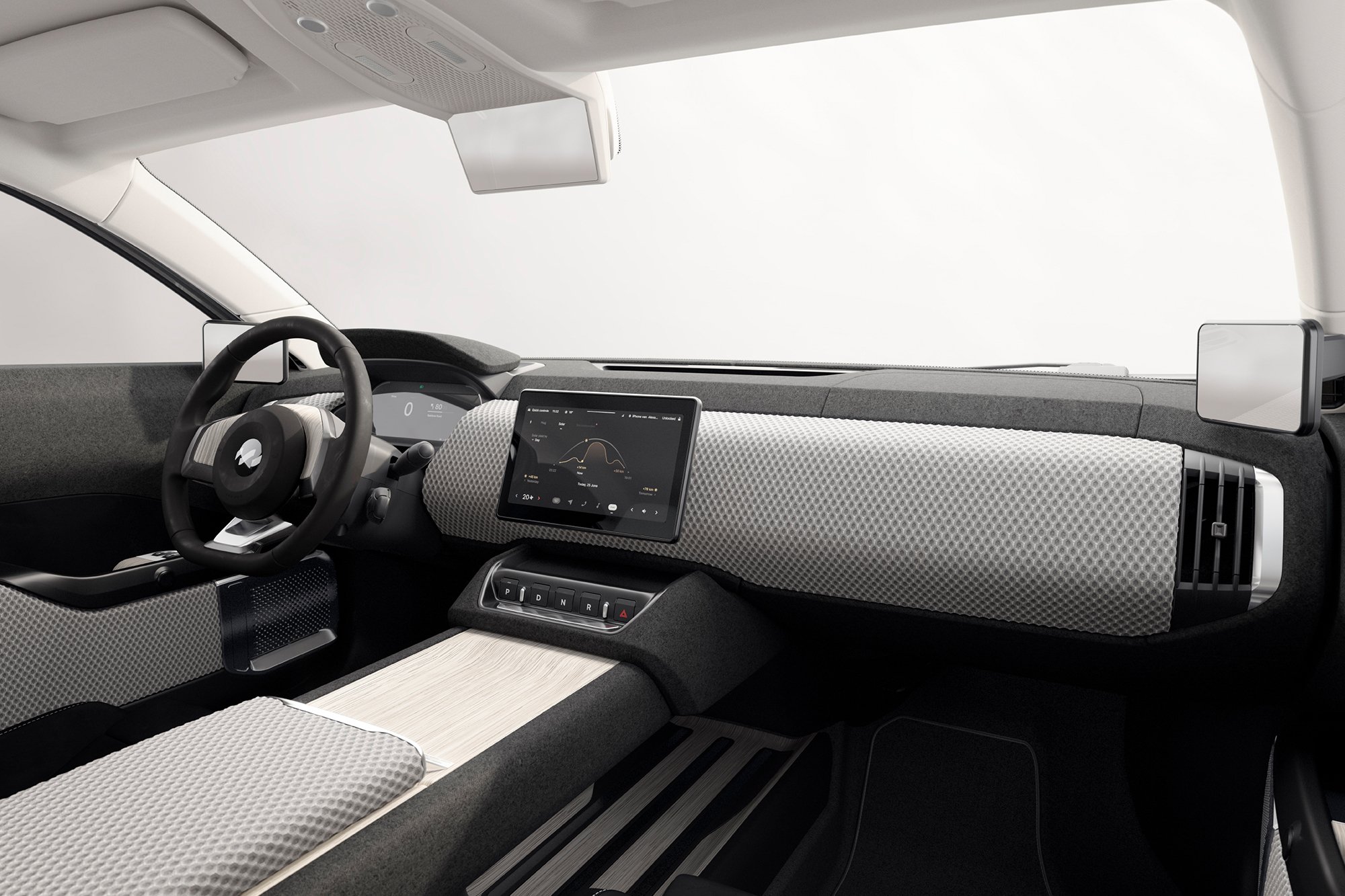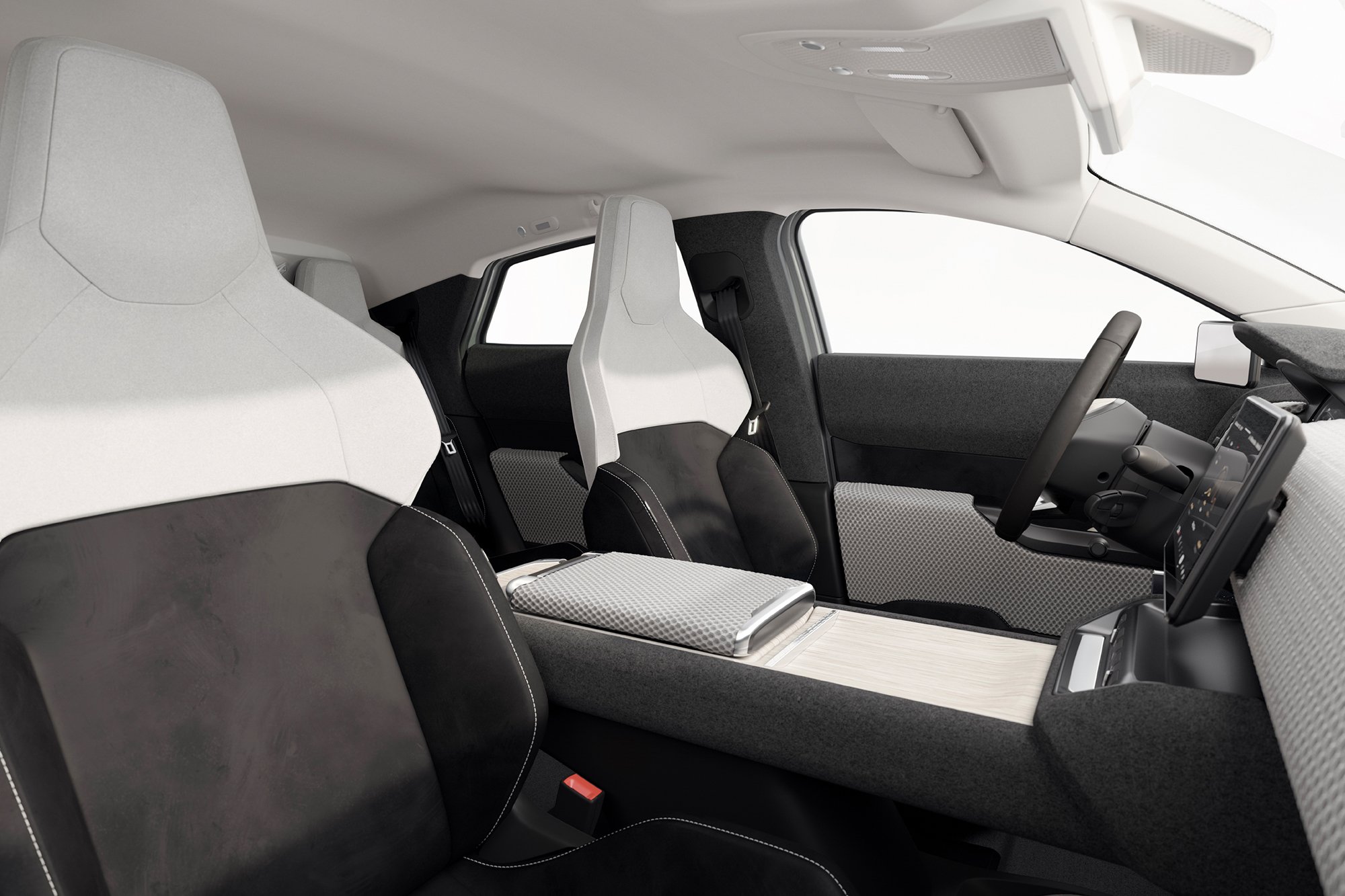Dutch brand Lightyear premieres Lightyear 0 – the world’s first solar car
Solar electric vehicle pioneer Lightyear, founded in 2016 and based in the Netherlands, just launched the global premiere of its production vehicle, the Lightyear 0 – the world’s first-ever solar car on the market. After unveiling the prototype in 2021, this launch is a much awaited and quite revolutionary step towards the electric mobility of the future. After many years of R&D, design, engineering, prototyping, and testing, the Lightyear 0 will go into production this fall.
As we recently wrote about in our article about circularity , there are many sustainability challenges even within electric mobility, notably with the production and use of lithium batteries. This is where Lightyear comes in with their solar rechargeable batteries, enabling a much cleaner power source. The Lightyear 0 will enable drivers to freely travel for up to seven months without plugging into a household outlet or charging station.
“After four years of hard work and in-house development, this is a very important engineering and technological milestone. It validates the performance of our patented technology and truly shows that we are able to deliver on our promise to introduce the most efficient electric vehicle.” – Lex Hoefsloot, CEO and co-founder of Lightyear
Lightyear’s “clean revolution” philosophy
As the brand expresses on their website, “humans have been travelling for 99% of history.” According to them however, mobility doesn’t have to cost our planet as much as it currently does, and we couldn’t agree more – the world needs a change. This is the basis for their philosophy towards a “clean revolution”: clean movement and independence from strained power grids, all thanks to nature’s gifts.
The use of solar energy also reduces the cost of electric vehicles, as batteries can afford to be much smaller and those are the most expensive parts of an EV. Most importantly addresses two of the significant issues of electric mobility: charging and range
This is why Lightyear designed a vehicle that is not only solar powered and therefore doesn’t require charging, but also long-range. It will give drivers the freedom to exceed 1.000 kilometers of range between charges.
The Lightyear One Prototype
In 2021, Lightyear launched its Lightyear one prototype, which had over 710km of range with an energy consumption of only 85Wh/km at 85km/hour. In short, this is around 50% less energy consumption than even the most efficient electric cars in the market today at such a speed.
The prototype car was put to the test at the Aldenhoven Testing Center in Germany to drive a full drive cycle at a speed of 85km/hour on a single battery charge of 60kWh, and the prototype most definitely passed the test, from the yield of the solar panels to the battery performance, cooling system and all the way to the functioning of the in-wheel motors and software.
The Lightyear 0
The final production model, the Lightyear 0 is a long range solar electric vehicle designed to be grid independent and to drive anywhere. It features five square meters of patented, double curved solar arrays, allowing the vehicle to charge itself while commuting or simply parked outdoors. In ideal conditions, this enables Lightyear 0 to power itself with 70 kilometers of range per day on top of its estimated 625 kilometers WLTP range. Thanks to a solar yield of up to 11.000 kilometers a year, drivers using Lightyear 0 for their daily commute (35 kilometers) can drive for months in the summer period before needing to charge the car. Of course depending on the climate, in the Netherlands this means two months, in Spain or Portugal around seven months.
Hence this shows that the Lightyear 0 is engineered like no other car, allowing its passengers to have a truly convenient and clean journey exploring the world while completely independent of the charging infrastructure.
The Lightyear 0 has four independent in-wheel motors providing power when and where it is needed. The motors deliver improved traction control and maximise energy efficiency on all types of surfaces. With an energy use of 10.5 kWh per 100 kilometers (at 110km/h), it is the most efficient electric vehicle. Its record-breaking drag coefficient of less than 0.19, makes the Lighyear 0 the most aerodynamic family car to date. The vehicle measures five meters in length, has a total weight of only 1.575 kilograms.


The vehicle has been designed with minimalism, sustainability and comfort in mind. The sleek dashboard has a 10.1-inch touchscreen infotainment system that permits cloud-based updates. The entire interior is made of vegan and naturally-sourced materials such as ecological microfiber suede seats and rattan palm detailing.
The Lightyear 0 is limited to 946 vehicles at a cost of €250,000. However the next model of the brand will be designed for high-volume production with a starting price of 30.000 €. Production is set for late 2024 / early 2025. We are looking forward to this new era of clean mobility and can’t wait to test drive the Lightyear 0 ourselves.
Pictures: Lightyear


